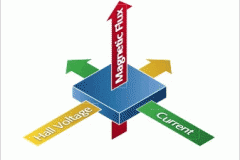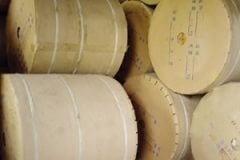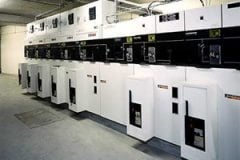All materials have magnetic properties. These characteristic properties may be divided into five groups as follows:
- Diamagnetic
- Paramagnetic
- Ferromagnetic
- Antiferromagnetic
- Ferrimagnetic
Only ferromagnetic and ferrimagnetic materials have properties which are useful in practical applications. Ferromagnetic properties are confined almost entirely to iron, nickel and cobalt and their alloys. The only exceptions are some alloys of manganese and some of the rare earth elements.
Ferrimagnetism is the magnetism of the mixed oxides of the ferromagnetic elements. These are variously called ferrites and garnets. The basic ferrite is magnetite, or Fe3O4, which can be written as FeO · Fe2O3. By substituting the FeO with other divalent oxides, a wide range of compounds with useful properties can be produced. The main advantage of these materials is that they have high electrical resistivity which minimizes eddy currents when they are used at high frequencies.
The important parameters in magnetic materials can be defined as follows:
Permeability
This is the flux density B per unit of magnetic field H. It is usual and more convenient to quote the value of relative permeability μr, which is B/μoH. A curve showing the variation of permeability with magnetic field for a ferromagnetic material is given in Fig. 3.1. This is derived from the initial magnetization curve and it indicates that the permeability is a variable which is dependent on the magnetic field.
The two important values are the initial permeability, which is the slope of the magnetization curve at H = 0, and the maximum permeability, corresponding to the knee of the magnetization curve.
Saturation
When sufficient field is applied to a magnetic material it becomes saturated. Any further increase in the field will not increase the magnetization and any increase in the flux density will be due to the added field. The saturation magnetization is Ms in amperes per metre and Js or Bs in tesla.
Remanence
Br and coercivity, Hc – these are the points on the hysteresis loop shown in Fig. 3.2 at which the field H is zero and the flux density B is zero, respectively. It is assumed that in passing round this loop, the material has been saturated. If this is not the case, an inner loop is traversed with lower values of remanence and coercivity.


Ferromagnetic and ferrimagnetic materials have moderate to high permeabilities. The permeability varies with the applied magnetic field, rising to a maximum at the knee of the B–H curve and reducing to a low value at very high fields.
These materials also exhibit magnetic hysteresis, where the intensity of magnetization of the material varies according to whether the field is being increased in a positive sense or decreased in a negative sense, as shown in Fig. 3.2. When the magnetization is cycled continuously around a hysteresis loop, as for example when the applied field arises from an alternating current, there is an energy loss proportional to the area of the included loop. This is the hysteresis loss, and it is measured in joules per cubic metre.
High hysteresis loss is associated with permanent magnetic characteristics exhibited by materials commonly termed hard magnetic materials, as these often have hard mechanical properties. Those materials with low hysteresis loss are termed soft and are difficult to magnetize permanently. Ferromagnetic or ferrimagnetic properties disappear reversibly if the material is heated above the Curie temperature, at which point it becomes paramagnetic, that is effectively non-magnetic.







